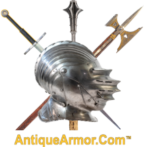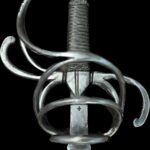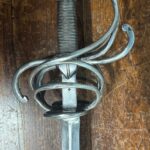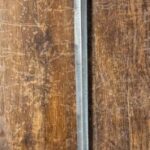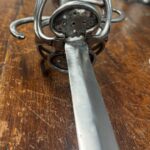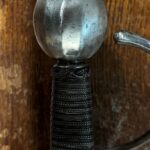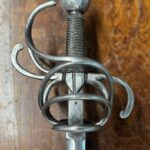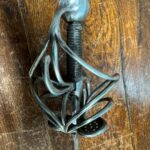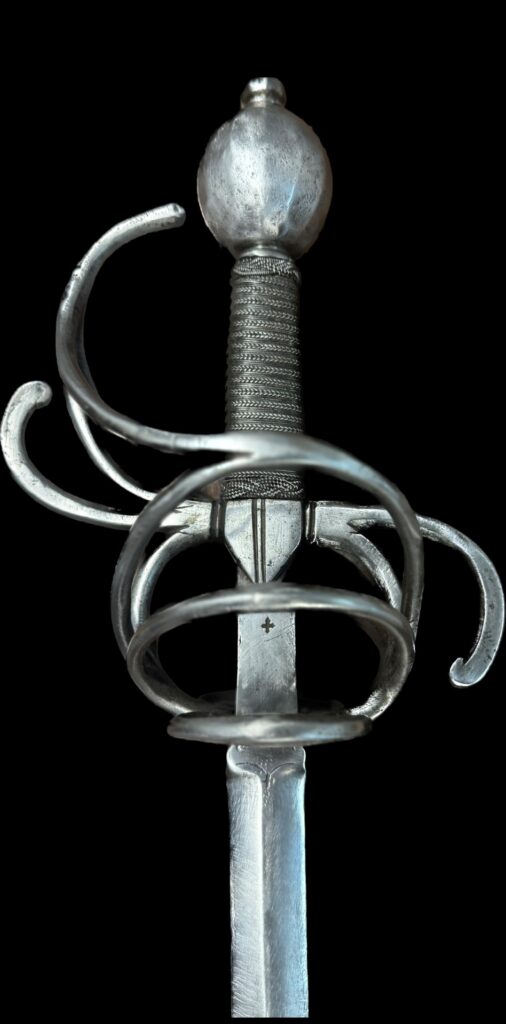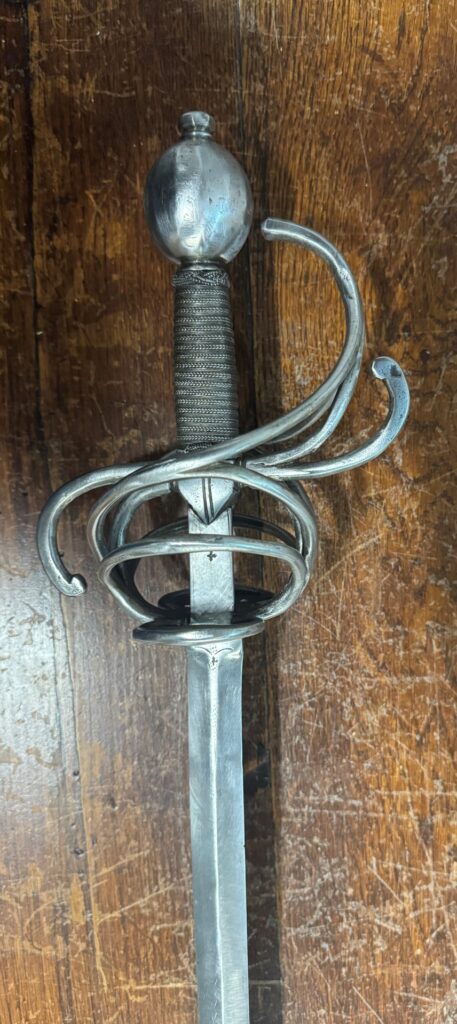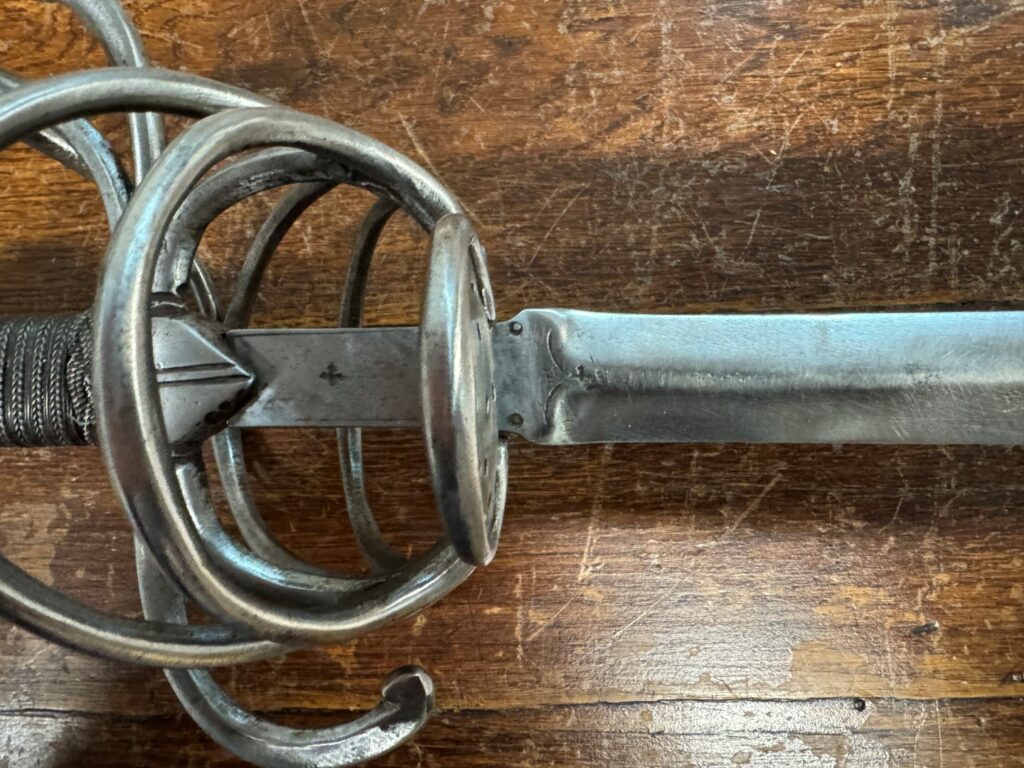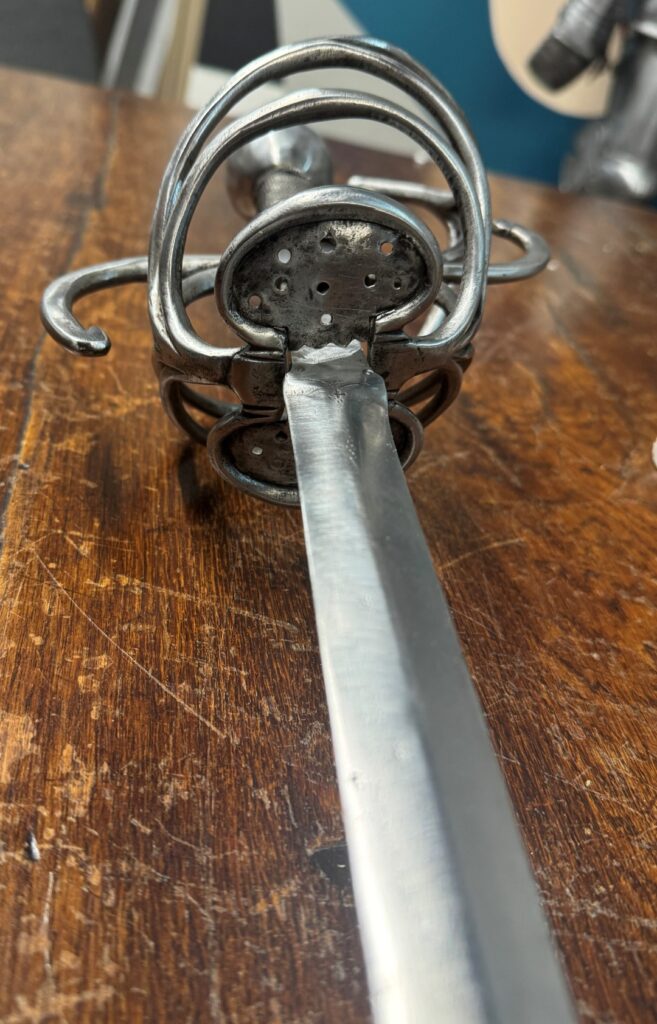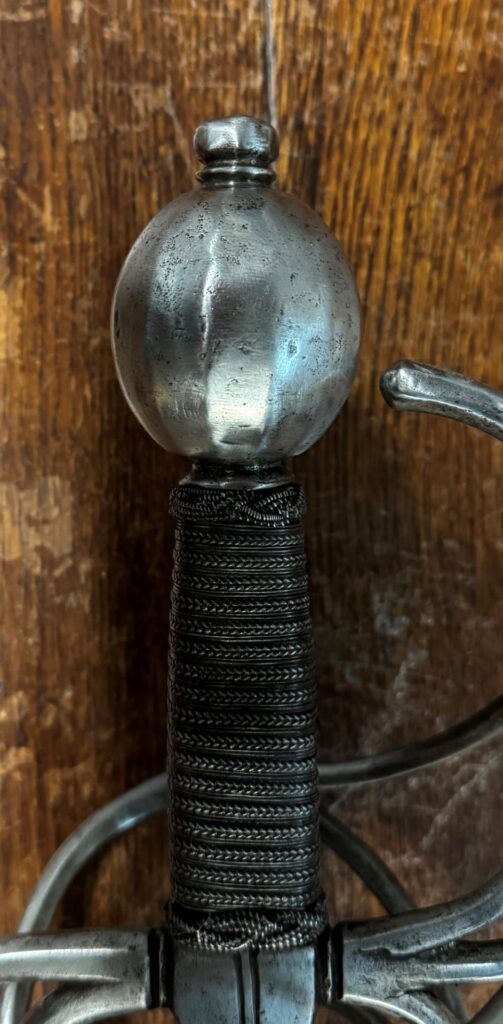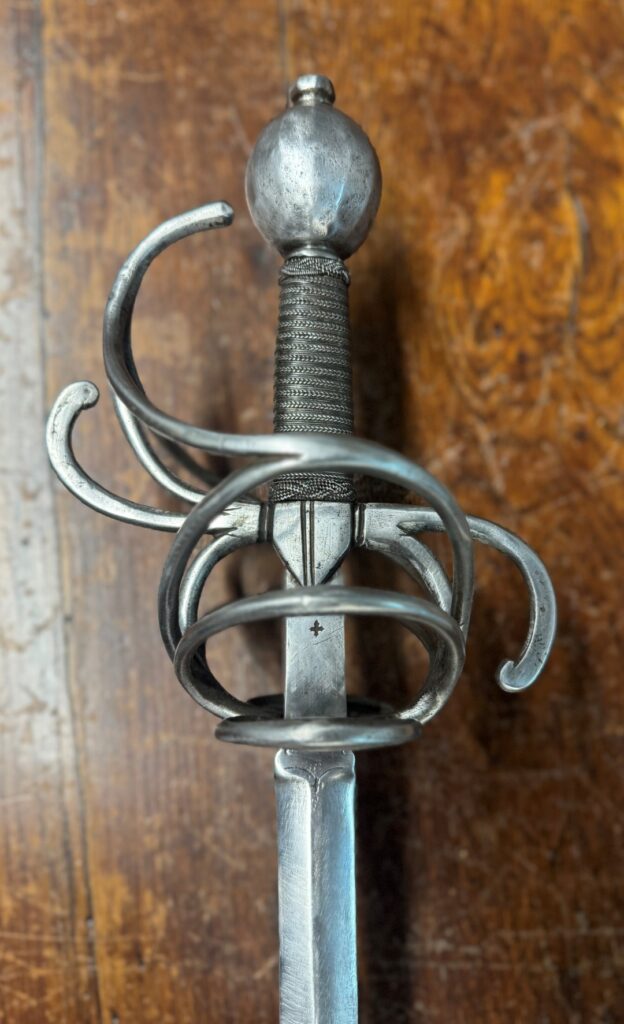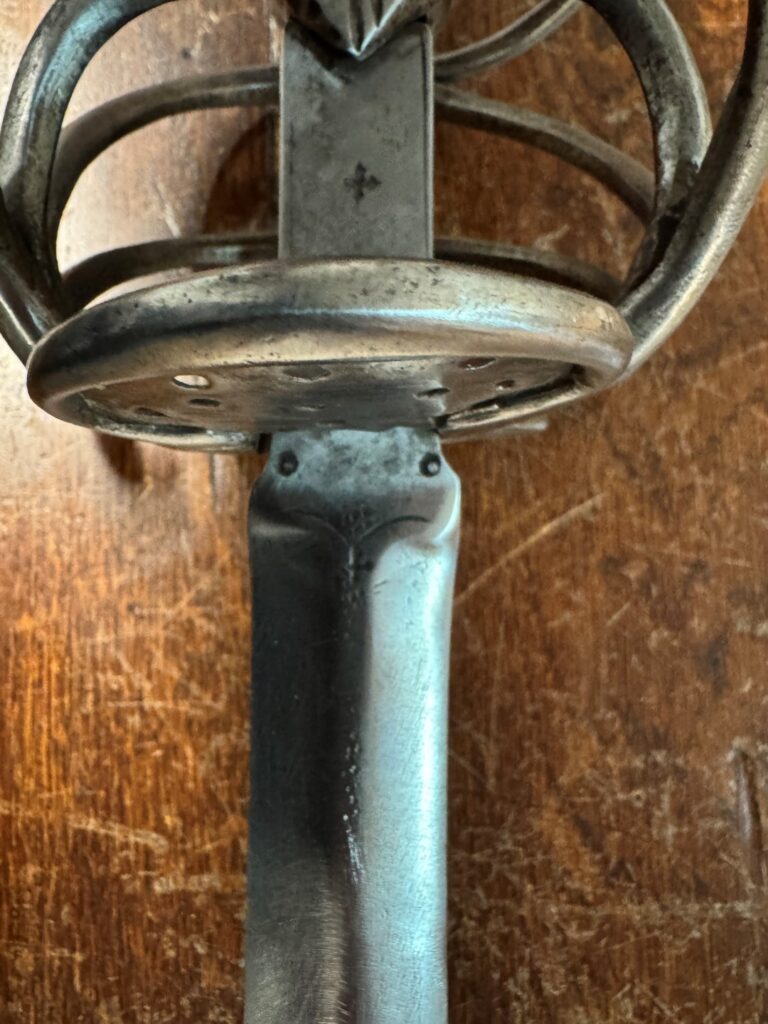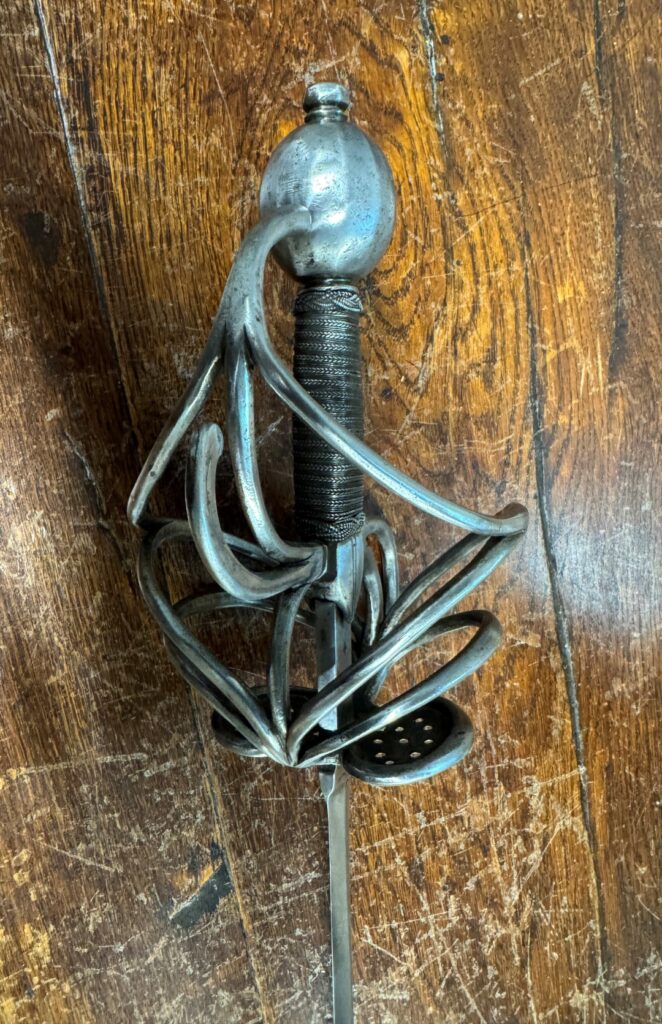1753) ELEGANT MASSIVE GERMAN MILITARY RAPIER CIRCA 1615-25: The Norman hilt 63 was used for a short period of time from 1615-1635. Judging from the length of the blade, pommel, and hilt typology, I would date this rapier 1615-1625.
Introduction: High fashion was an essential status and power symbol during the late Medieval and Renaissance periods. High fashion was especially important among the mega-wealthy, who wanted to outdo their rivals, neighbors, and peers in the fashion arena. Not all wars were fought on the battlefield with swords, lances, and armor. A non-bloody war was in the fashion and status arena. Fashion also extended deeply to Arms and Armor. The phrase… “keeping up with the Joneses” … is not a new 20th-century concept.
Discussion: In a day and age lacking appropriate policing, the private citizen was forced to protect himself from society‚ criminal dregs. The weapon of choice was the rapier from the middle of the 16th to the end of the 17th century. The rapier is a simple but highly effective sword against the non-armored. The rapier was primarily a thrusting weapon that could inflict serious injury to an adversary‚ vital organs with minimal effort. It was also an exceptional slashing and cutting weapon; however, the slash was not as lethal as the thrust. The slash was used more as a feint to set up a finishing thrust. The slash was also a dire warning to a would-be assailant of the horrors to quickly follow if he chose not to acquiesce.
The rapier is almost undeniably of Spanish origin and is probably Spain‚ most significant contribution to the Renaissance arms race. A highly expensive, ornate rapier was the equivalent of a person in our day and age making a fashion or opulence statement by wearing very expensive jewelry, such as a Rolex or Audemars Piguet watch. Because fencing is more of a thrusting art, it became commonplace throughout Europe to have as long a blade as possible to obtain an advantage. This extravagance in length reached the point that municipalities passed statutes regarding the allowable lengths of blades. Those in violation had the misfortune of having their rapier‚ blades cropped at the tip at the city gate to comply. One example of these statues is from an English Royal Proclamation on March 17, 1557. The French adopted the phrase “espee rapiere” by 1475, which later was shortened to simply “rapiere,” the English in 1505 spelled it”rappyer.” The Giles Duwes English/ French dictionary of 1532/3 adopted the rapier definition as Spannyshe sworde.
By 1550, the term rapier had been adopted to describe a slender, sharply pointed sword designed for thrusting, cutting, and slashing attacks. The rapier now consisted of a hilt protected by a handguard. The Earliest Illustration of this sword Typology is in a 1588 portrait of John Shirley, currently housed in the Metropolitan Museum of Art (#51.194.2). Also illustrated in a portrait of Luccio Foppa circa 1585 by Giovani Antonio Figino.
Description: Under the Norman typology, the rapier under discussion would be a Hilt 62 with a pommel 30. The pommel 30 was used from 1600-1625. The flat reverse quillons curl at the tips. The bottom guard is reinforced with its original mesh guard. At the ricasso, a maker’s mark is in the form of a cross. The wooden grip is wrapped in wire, with two Turks Heads. The long blade of diamond section tapers evenly towards the tip.
This typology of the pommel is illustrated in a painting dated 1610 of a 21-year-old holding a bastard sword man by Forrer and in a portrait of a member of the Swiss guard dated 1613 by Francesco Villemena.
Condition: This sword is in superb condition and can be proudly displayed in any collection.
Comparables:
-Royal Collection at Windsor 1904 Cat. # 62.
-Victoria and Albert Museum Reg. # 2227-1855.
-Musse de l Armee Paris, Cat # J206.
-Museo Stibbert, Florence Cat # 2028.
Conclusion: Even if you are not a rapier aficionado, all early arms and armor collections should have at least one example of a rapier. Military rapiers have a strong attraction for collectors.
All my items come with the following:
–Free shipping.
–10-day review period.
–Certificate of Authenticity.
–Autographed copy of my book.
– In the event of an international shipment, we will help assign the lowest correct Customs tariff so you pay the least.
This is a great example of a very good rapier that is very reasonably priced at under $5K!!!*. Act now so you will not be disappointed. They seldom come this nice.!!!*
